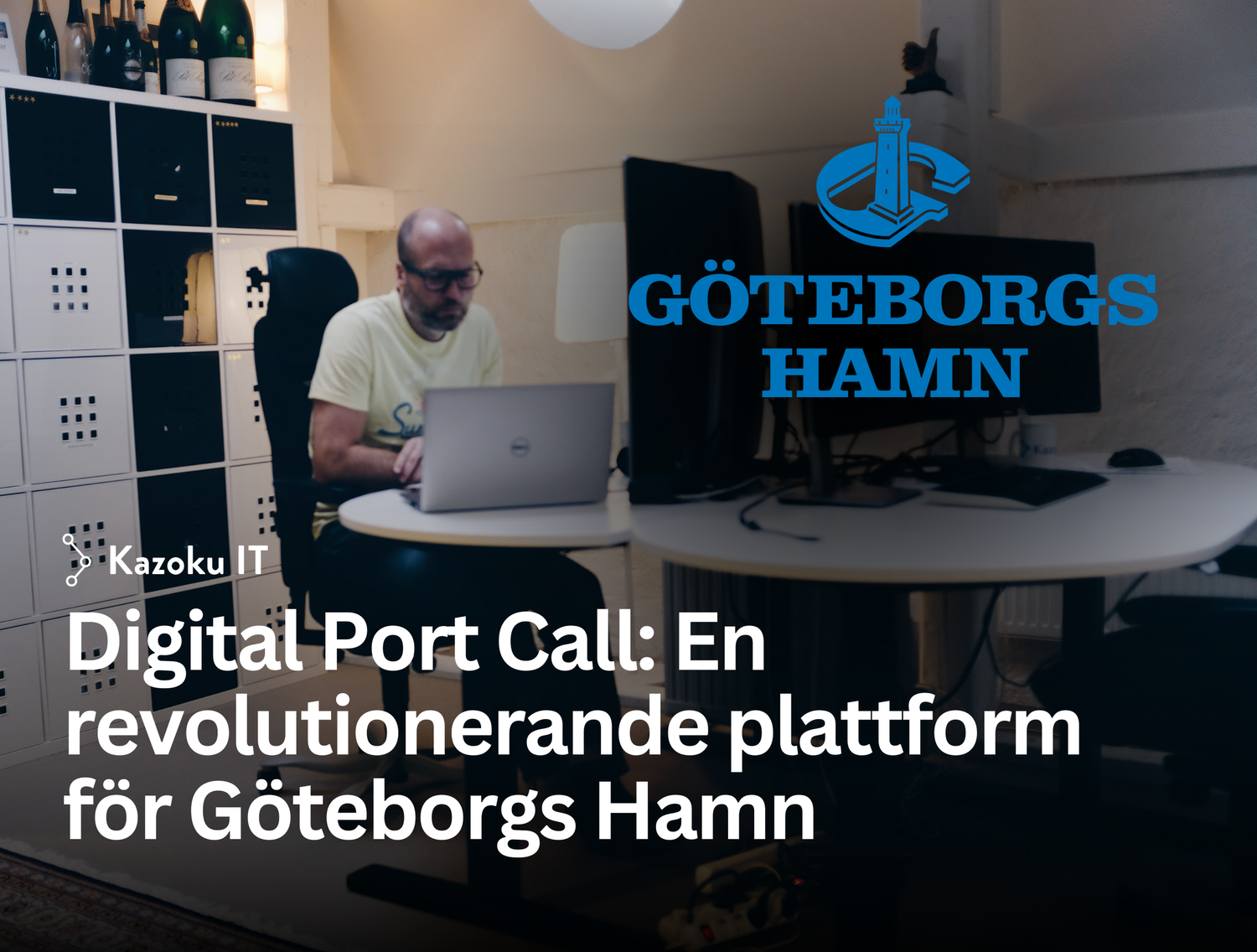The Port of Gothenburg is a central hub for cargo flows to and from Sweden and throughout Scandinavia. With an ever-increasing volume of cargo and demands for faster turnaround times, the port needed an innovative solution to keep up with global logistics needs.
“We spend a lot of time in the beginning creating the integrations to adopt the thinking and the way of working in several places, so we create standardisations, I think that is extremely important because otherwise we will be sitting here with 1000 different solutions that cannot be managed. The functions we go live with on Digital Port Call, such as Just-In-Time, we started talking about back in 2014. Since then, a feasibility study has gradually been carried out, and then planning and procurement have taken place. We started the actual development last year (2023).” says Emily Andersson, Project Manager at the Port of Gothenburg.
While Digital Port Call has proven to be a success so far, there are still challenges to overcome and potential for further improvements. A lot of it is about continuing to manage the platform and working together to reduce complications in the future.
“This integration platform is extremely important to us and we have also realised that it is important to have a good partner and that is why we have Kazoku IT as a partner. We find that we interact incredibly well and we get tremendous support over what steps to take, options and suggestions, but what is also important is that we can manage it together. If something happens or breaks down, we have a lot of support from that side. ” says Emily.
These integrations have not only improved efficiency but also reduced the risk of misunderstandings and delays, which in turn has led to reduced costs and increased customer satisfaction.
To enable this advanced integration, the Port of Gothenburg has invested in a range of technical systems and infrastructure improvements. Mikael Arvhammar from Kazoku IT is one of the people who integrated the platform for the Port of Gothenburg. By bringing all parties and processes together in a single system, the Port of Gothenburg can ensure that all information is available in real time and that decision-making is based on the most current and relevant data. This includes captains and crew, port staff and logistics companies.
“During the project I have realised that this is a concept that we should put a message format on, so I have set up a JSON format where I look at all the parts that are included in the Digital Port Call. Then there can be different parts in this message format, so that you can also bake everything into one big call with call data, ship data, pilotage, towing, everything comes as different services in this format. After I developed it, we built the integrations on that format.” Mikael explains.
Digital Port Call is the answer to many challenges. This platform integrates all aspects of ship calls into a single digital service, eliminating many of the inefficiencies and communication gaps that can occur in a traditional port environment.
“Awake.ai collects data for others and sets up alerts for pilots and tugs that don’t seem to be on time with the call. So we send data to Allberth which is then displayed in their Digital Port Call. I have used Nodinite a lot and trimmed search fields, status codes and log views to be able to follow the integrations.” says Mikael.
Digital Port Call is built using advanced technologies such as cloud services, API, AI, IoT, and real-time data exchange. These components work together to create an integrated and efficient platform that not only improves the operational efficiency of the port but also contributes to sustainability by reducing carbon emissions and fuel consumption. By utilising these technologies, the Port of Gothenburg can offer a modern and efficient solution that meets the growing needs of global logistics and shipping. This platform demonstrates how digitalisation and integration can lead to tangible improvements in both operational efficiency and environmental impact, making it a model for ports worldwide.

